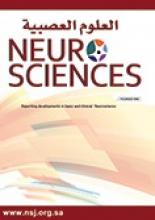Abstract
OBJECTIVE: The objective of this study is to compare the fast Walsh transform with autoregressive method for spectral analysis of heart rate variability signals based on evaluating the quantitative and dynamic differences between the results of Walsh and autoregressive analysis of heart rate variability signals for healthy patients and diabetic patients who have suffered from diabetes more than 10 years and have autonomic dysfunction.
METHODS: Electrocardiogram signals from 8 normal subjects and 8 diabetic patients were measured and recorded in the supine position for a 15 minute period. Heart rate variability signals extracted from electrocardiograms were recorded on FM recorder or digitized and recorded on floppy disk for future analysis. Walsh and autoregressive analyses were employed to compare the efficacy of both techniques.
RESULTS: The study shows that there are quantitative differences of power spectra of heart rate variability signals between the two frequency techniques namely the autoregressive method and fast Walsh transform for both the healthy and diabetic groups. The efficiency of fast Walsh transform and the autoregressive method have been recognized due to the computionally superiority, supporting the use of both techniques instead of fast Fourier transform especially for heart rate variability signals. However, the autoregressive method may be superior over fast Walsh transform specially in short duration of heart rate variability signals as well as the low signal to noise ratio of heart rate variability signals.
CONCLUSION: The analysis of heart rate variability signals using autoregressive and fast Walsh transform methods based on evaluating the quantitative and dynamic differences seems promising to track the compilation of diabetic patients on autonomic function. Further investigation may be needed to use these indices for early diagnosis of autonomic dysfunction using this methodology.
- Copyright: © Neurosciences
Neurosciences is an Open Access journal and articles published are distributed under the terms of the Creative Commons Attribution-NonCommercial License (CC BY-NC). Readers may copy, distribute, and display the work for non-commercial purposes with the proper citation of the original work.






